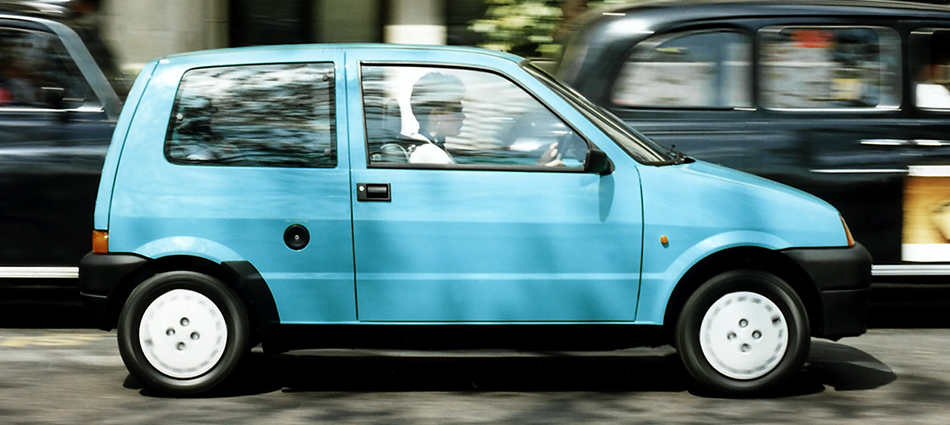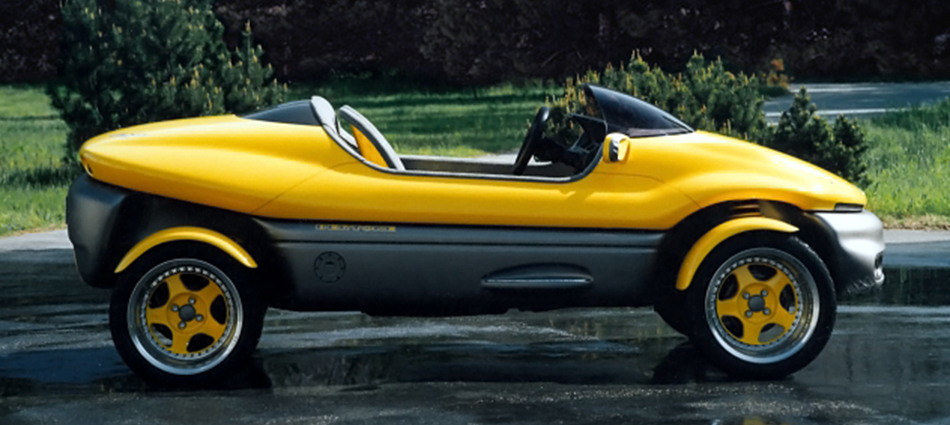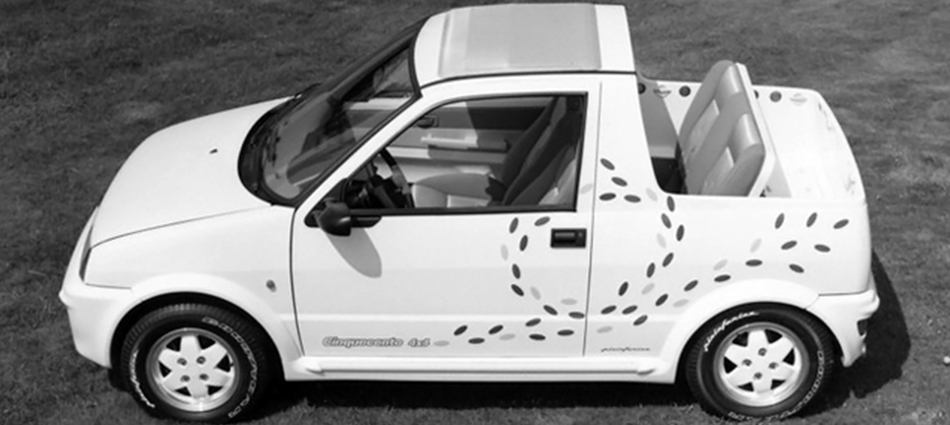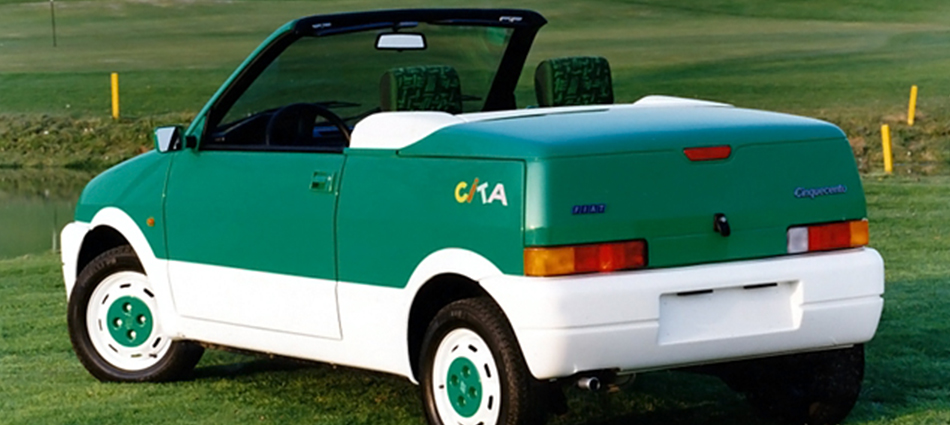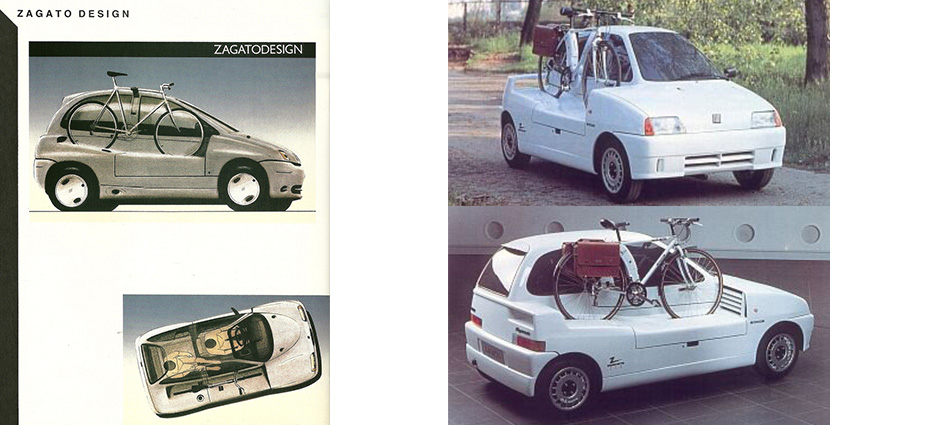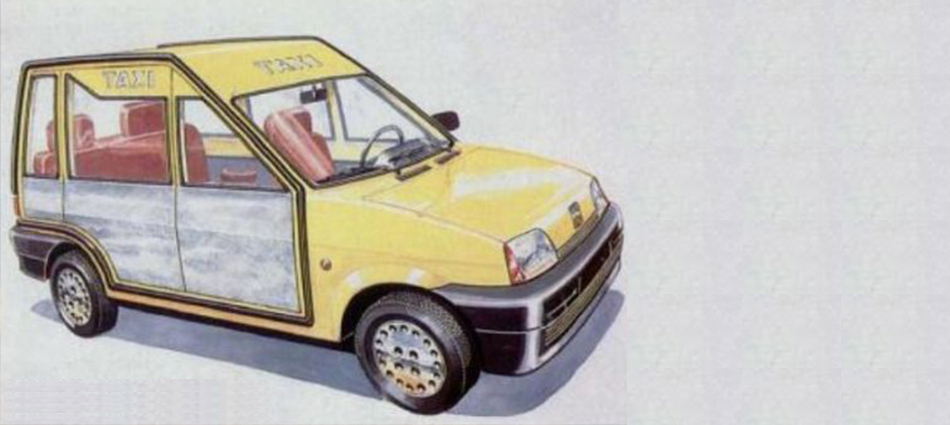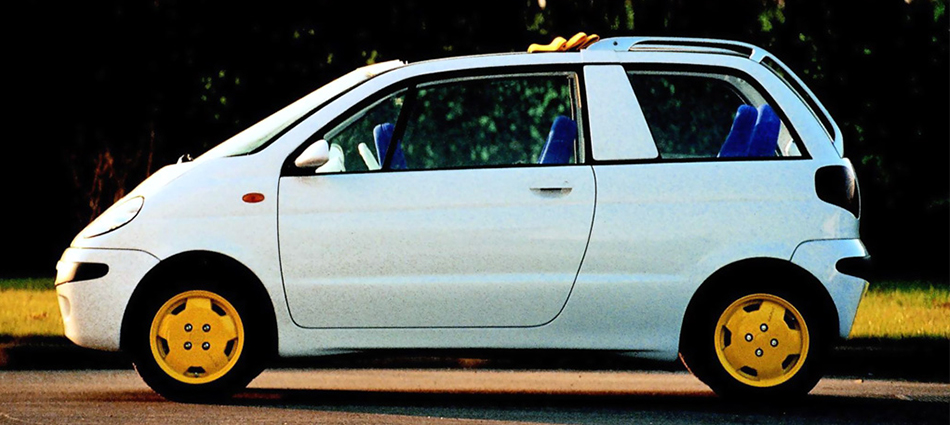The Thinker's Garage Pondering Automotive History, Design and Culture

Meet the Fiat Cinquecento’s crazy family
The Fiat Cinquecento, launched in 1991, was a modern yet utilitarian small car designed for European cities. Thanks to its combination of the joie de vivre small Fiats are renowned for, practical yet small size and keen pricing, it was a sales success. Thanks to Fiat’s willingness to innovate throughout the 90s, it also spawned a family of vehicles whose influence were felt worldwide for years to come.
Having launched the Cinquecento in 1991, Fiat proceeded to commission some of the best design houses of the period to take the vehicle’s platform and re-imagine, reinvent and redevelop it. The outcome was a series of concepts, from the sublime to ridiculous, that really showcased the best and worst of early 1990s car design. Here were the proposals:
Bertone Rush
Bertone’s proposal was the more radical looking of the group; an open top, two seat vehicle inspired by the Dune Buggies of the 1960s and 70s. Although stylistically and functionally it was a radical departure from the Cinquecento on which it was based, the Rush’s personality offered a concentrated version of the carefree spirit so often associated with Italian small cars. It featured bright upper panels contrasting with rugged, industrial style lower bodywork – a treatment that appears tough yet playful – once again, descriptors fitting of the Cinquecento itself.
I.DE.A Grigua
The I.DE.A institute’s proposal was also reasonably radical, both stylistically and from a packaging standpoint. Look beyond the wild two-tone gradient colour scheme and underneath was a clever city car for the future. The Grigua’s aerodynamic bodywork typified I.DE.A’s work from the era and featured headlamps cleverly integrated into the front windshield and large sections of glazing, giving the passenger compartment a spacious feel. The innovative exterior housed an interesting cockpit which featured a three-seat layout, with the driver centrally positioned and the two passengers set slightly further back, allowing easier access to all seats. The seating arrangement also allowed for plentiful luggage space.
The following year, I.DE.A continued development of the Grigua, spinning off an off-road version which featured open sides, an increased ride height and a selection of off-road equipment.
Fiat Cinquecento Pick-Up – Pininfarina
Pininfarina’s concept was one of the solutions whose roots were more instantly recognisable – indeed, forward of the b-pillar the differences between the Pick-Up and the standard Cinquecento are negligible – only minor trim and fascia changes. It was the rear of the car where the innovation was to be found. Here, the rear upper bodywork had been removed to create a utility style body shape and bottom hinged tailgate. This formed the basis for a number of guises the car could take. Firstly, and most obviously, was the flat floored utility vehicle, however a rear row of seats was hidden beneath and could cleverly fold up to carry rear passengers. The vehicle also featured removable rear bodywork and a retractable soft top roof to offer a choice between open-air motoring and water and weatherproof comfort. A vehicle with a similar concept was eventually placed into production over a decade later by Citroen (the C3 Pluriel), however we will probably never know whether this was pure coincidence or if the Pick-Up was an influence on the French manufacturer’s designers.
Coggiola Fionda
One of the more curious looking concepts to come out of the commission was Coggiola’s effort, named the Fionda – Italian for ‘sling’. The Fionda’s radical sporty appearance, with its aerodynamic styling and unique roof and glasshouse treatment, moved it far away from the Cinquecento on which it was based.
Fiat Cinquecento Cita -Stola
Stola’s proposal was reasonably straightforward – a two seat roadster version of the Cinquecento. Aside from the rear deck, soft top roof and some colour and trim variations, the Cita was probably the closest to Fiat’s production car and thus the most production ready of the proposals.
Fiat Cinquecento Z-Eco – Zagato
The Z-Eco was Zagato’s vision of an environmentally conscious commuter vehicle of the future. It featured an odd tandem two seat layout and a removable bicycle. This would allow the driver of the vehicle to park when congestion was reached and cycle the remainder of their journey, reducing gridlock, emissions and parking shortages in city centres. Despite the brutal angular styling (typical for Zagato – the Lancia Hyena debuted the same year), the concept still has relevance and merit today.
Boneschi Baby Taxi
Carrozzeria Boneschi’s proposal was the most utilitarian of the group – a rugged looking, taxi for urban use. While using a lot of the Cinquecento’s original bodywork, the Baby Taxi featured a tall roof and reasonably flat sides in order to maximise interior capacity, as well as forward sliding passengers doors designed to maximise passenger access. There was only one front seat, for the driver, and the passengers sat right at the rear of the car in order to maximise the space available to them.
ItalDesign Lucciola
Aside from the studies which keep significant portions of the Cinquecento’s bodywork, Giugiaro’s concept is probably the most recognisable to the general public today. The proposal shown at Turin 1992 was a static model, but over time this developed into the Lucciola (Italian for ‘firefly’) concept – a low emission, multi-purpose city car featuring a hybrid diesel-electric powertrain, a lightweight aluminium construction and an emphasis on recyclability. It had four individually adjustable seats which could fold back and forth and swivel, and a removable roof which extended its appeal beyond commuting. This was the one design of the group that was eventually refined into a production car – despite its Fiat roots by the end of the decade the Lucciola had given rise to the Daewoo Matiz.
